Mammal Species
Bahamian Lesser Funnel-eared Bat
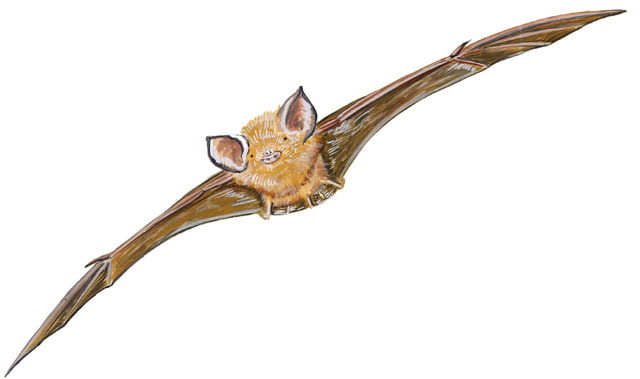
The Bahaman funnel-eared bat (Chilonatalus tumidifrons) is a species of bat in the family Natalidae.
This bat is endemic to the Bahamas, in the northeastern Caribbean. It was first discovered by Miller in 1903. Their category list and criteria are near threatened. The justification of their status is due to their bad habitat circumstances.
All funnel-eared bats have very large and funnel-shaped ears. These allow them to detect near-silent sounds and return echoes through echolocation. Small papillae cover the ears of these bats, which increases auditory sensitivity. They use olfactory and tactile cues in communication as other mammals do.
This species is not very well known, because they are only located in Bahamian dry deciduous forests. The deep caves where they are found, are hot and moist and are maintained constantly. During active hours, Bahaman funnel-eared bats forage for insects in the dense areas of the surrounding forests. The bats are hard to catch because they are very agile flyers.
Bahamian Hutia
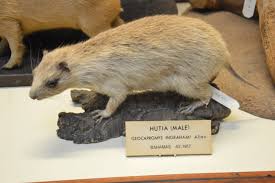
The Bahamian hutia or Ingraham’s hutia (Geocapromys ingrahami) is a species of rodent in the family Capromyidae. Geocapromys ingrahami is endemic to the Bahamas. Its natural habitats are subtropical or tropical moist lowland forest, subtropical or tropical dry shrubland, and rocky areas.
The Bahamian hutia is a rat-like rodent with a short tail and a body length of up to 60 centimetres (24 in). Its fur varies in colour and can be black, brown, grey, white or reddish.
The Bahamian hutia is endemic to the Bahamas. It was believed to be extinct until 1966, when biologist Garrett Clough found a relic population on East Plana Cay, a small, uninhabited strip of land east of Long Island, Bahama, between Acklins Island and Mayaguana Island. The Plana Cays are the last natural habitat of the Bahamian hutia and are currently home to most of the remaining population. Colonist hutias were introduced into isolated parts of the Exuma Cays Land and Sea Park in 1973 as a conservation measure.
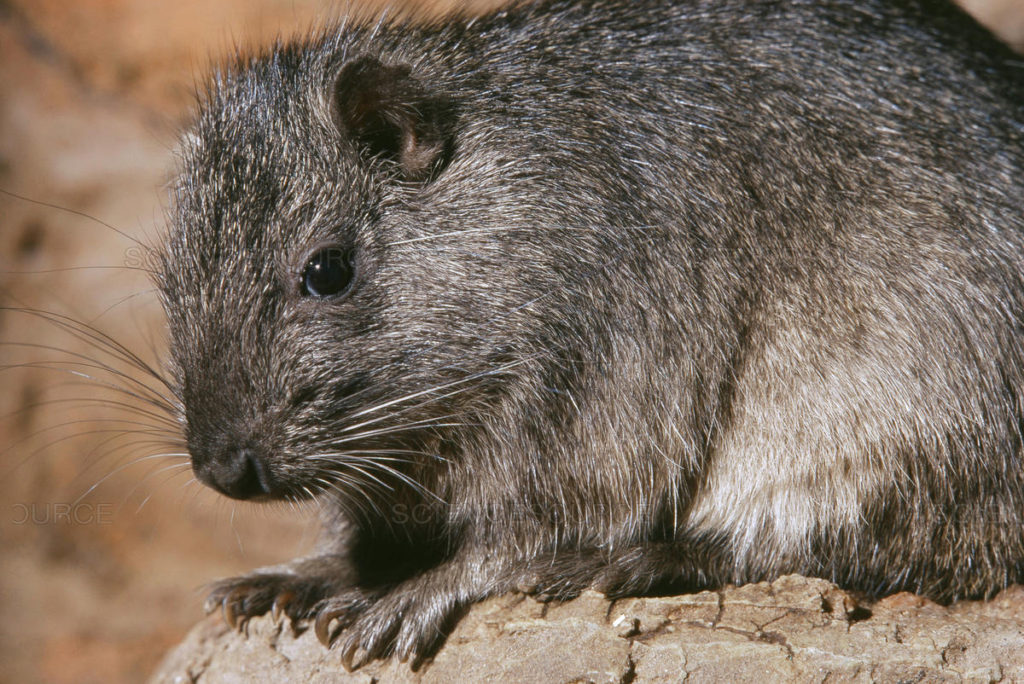
Two subspecies became extinct in modern times. The Crooked Island hutia (G. i. irrectus) and the Great Abaco hutia (G. i. abaconis) were mentioned by early European voyagers, and are thought to have become extinct by 1600. This is thought to be due to land clearance rather than direct hunting.
As this rodent is known from only six locations, the International Union for Conservation of Nature has rated its conservation status as being “vulnerable”. Its population, though small, is believed to be steady, but it could be threatened by adverse conditions such as a hurricane, or by the arrival on the islands of predators such as feral cats.
Bird Species
Brace’s Emerald (Extinct)
Brace’s emerald (Chlorostilbon bracei) is an extinct species of hummingbird which was endemic to the main island of the Bahamas, New Providence.
Its size was 9.5 cm, the wing length 11.4 cm and length of the tail 2.7 cm. The black bill was slightly curved and conical pointed. The feet were black. The back exhibited a bronze-green hue with a golden gleam. The head was similar coloured like the back with the absence of the golden gloss. Directly behind the eyes was a white spot. The throat gleamed in magnificent blue-green colour hues. The abdomen had green feathers with ash-grey tips. The wings exhibited a purplish hue. The rectrices were greenish. The crissum (these are the undertail coverts which surrounded the cloacal opening) was grey with a faint cinnamon hue at the edges.
For more than a hundred years Brace’s emerald was only known by one single male specimen which was shot by bird collector Lewis J. K. Brace on July 13, 1877 around three miles (4.8 kilometres) away from Nassau in the inland of New Providence. The skin which is unfortunately heavily injured at the throat is now at the Smithsonian Institution in Washington, D.C.. This small hummingbird was long ignored by the ornithological authorities. In 1880 it was listed without commentary as a synonym of the Cuban emerald (Chlorostilbon ricordii). Until the 1930s the unique status of the holotype was not even recognized or it was seen as an aberrant specimen of the Cuban emerald which was blown to New Providence. American ornithologist James Bond was the first to discuss the differences between C. ricordii and C. bracei. In 1945 he split C. ricordii and regarded C. ricordii bracei as a new subspecies. In contrast to the Cuban race, the specimen from New Providence was smaller, had a longer bill and a different plumage. In 1982 palaeornithologists William Hilgartner and Storrs Olson discovered fossil remains of three hummingbird species from the Pleistocene in the deposits in a cave of New Providence. These were the Bahama woodstar (Calliphlox evelynae), Cuban emerald (Chlorostilbon ricordii), and a species which was later identified as Chlorostilbon bracei. This provided evidence that Brace had discovered a new hummingbird species which lived on New Providence since the Pleistocene. It formed a relict population and probably due to habitat loss and human disturbance (e.g. agriculture) it became extinct at the end of the 19th century.
Bahama Lizard-cuckoo
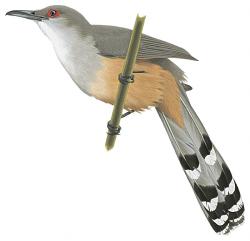
Bahama Swallow
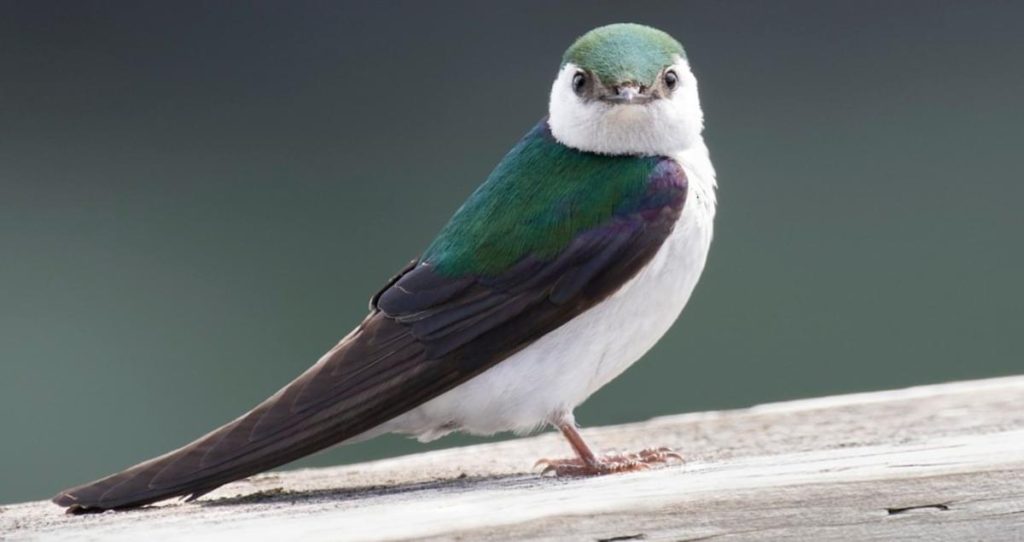
This glossy Tachycineta swallow has a green head and back, blue upper wings, a black tail and wingtips, and a white belly and chin.
This swallow breeds only in pineyards on four islands in the northern Bahamas: Andros, Grand Bahama, Abaco, and New Providence. The breeding population on New Providence is, at the very least, greatly reduced from historical levels, and maybe extirpated as a breeding species.
The Bahama swallow winters throughout the eastern Bahamas and the Turks and Caicos Islands. It is a rare vagrant elsewhere during migration, including south Florida and the Florida Keys. It is also an occasional vagrant to the southerly Americas.
T. cyaneoviridis is a bird of the Caribbean pine forests. They are somewhat capable of adapting to the urban habitat. Although they do not breed in marshland and fields, they need such habitat to forage; like all swallows, they feed on flying insects.
Bahama swallows nest in old West Indian woodpecker holes in Caribbean Pine (Pinus caribaea var. bahamensis), using pine needles, Casuarina twigs, and grass to make the nest, and they line it with feathers from other passerines. They typically lay three eggs. Incubation is 15 days and the fledging period is roughly 22 days.
Bahama Nuthatch
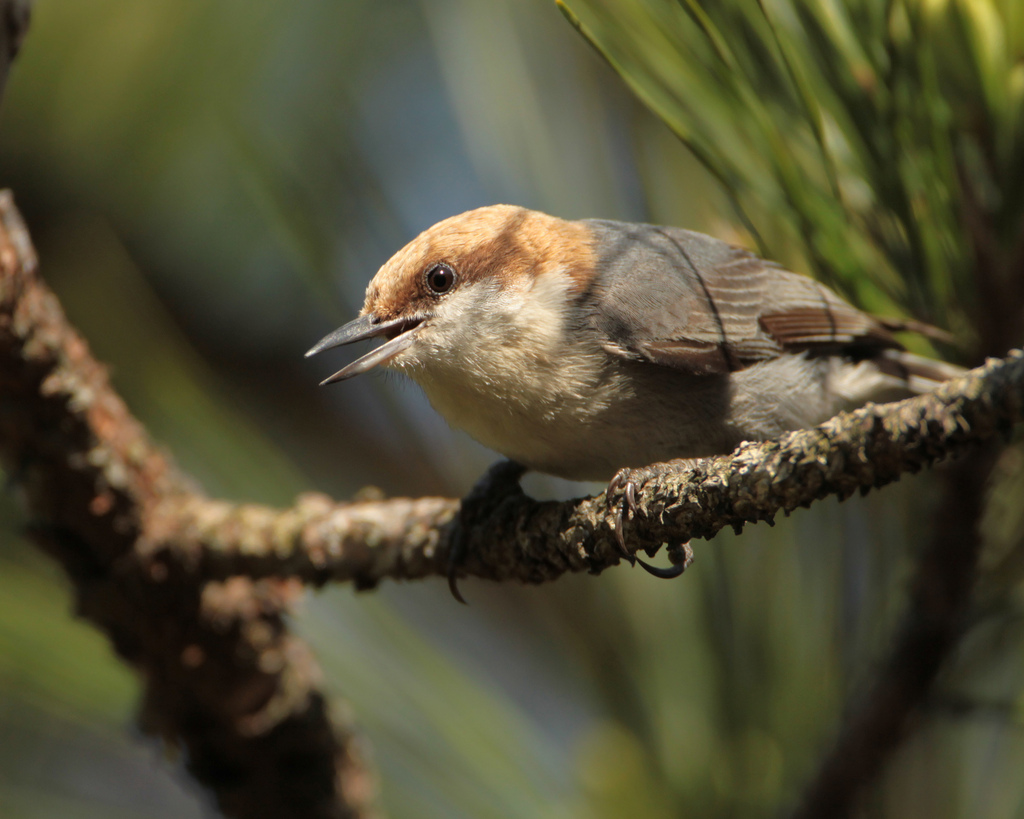
The Bahama nuthatch (Sitta pusilla insularis) is a nuthatch endemic to the pine forests of Grand Bahama island in the Bahamas. It is usually considered a subspecies of the brown-headed nuthatch, although some authorities recognize it as a distinct species. It has some notable differences from its mainland counterpart, including a darker brown facial stripe, a longer bill, shorter wings, and a unique warbling call. Research using genetic markers indicates that both species likely diverged around 685,000 years ago.
It is critically endangered and may already be extinct. Due to its very restricted range, it is highly threatened by habitat destruction and degradation, fires, and hurricane damage. Invasive species may also play a role. A 2007 survey previously indicated that only about 23 individuals remained. The destruction wrought by Hurricane Matthew in 2016 led to fears that the bird was extinct until 2018 when two birds were found. However, the extremely destructive effects of Hurricane Dorian in 2019 are feared to have finally finished off whatever was left of the population, especially the historically significant destruction and dramatic saltwater flooding of the Bahamian pineyards from the lingering Category 5 storm.
Northern Red-legged Thrush
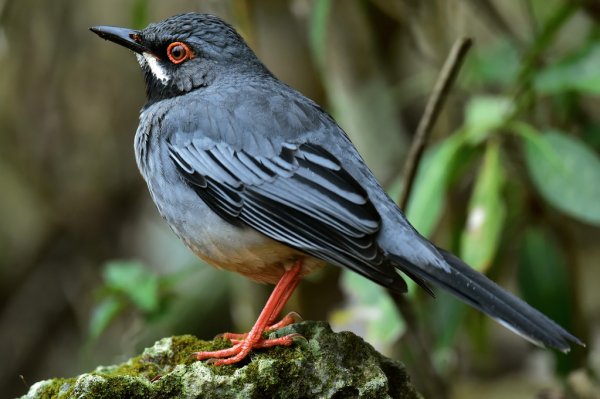
The red-legged thrush (Turdus plumbeus) is a species of bird in the family Turdidae. Native to the Caribbean, it is found in the Bahamas, Cayman Brac, Cuba, Dominica, the Dominican Republic, Haiti and Puerto Rico. It formerly occurred on the Swan Islands, Honduras. Its natural habitats are subtropical or tropical dry forests, subtropical or tropical moist lowland forests, subtropical or tropical moist montane forests, and heavily degraded former forest. This species may be considered the Caribbean counterpart of the American robin, as it has similar habits, including being a common visitor to gardens and lawns.
This large thrush measures 27 cm (11 in) and weighs approximately 75 g (2.6 oz), depending on subspecies. It is mainly bluish-grey above and lighter-grey below with a white and black throat with a striped appearance. The legs, bill and eye-ring are bright orange-red. There is notable variation in plumage between the subspecies.
Bahama Oriole
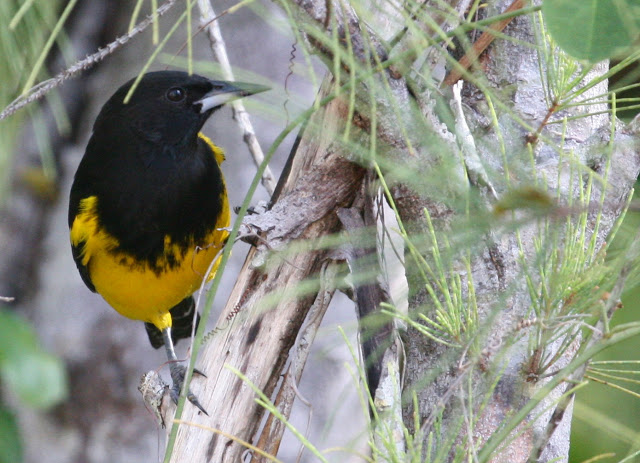
The Bahama oriole (Icterus northropi) is a species of songbird in the New World blackbird family – Icteridae. It is endemic to the Bahamas. It is listed as critically endangered by the IUCN (CR). The taxon was originally classified as its distinct species in 1890 by Joel Asaph Allen before it was lumped with the Cuban Oriole (Icterus melanopsis), Hispaniolan Oriole (Icterus dominicensis), and Puerto Rican oriole (Icterus portoricensis) into a single species by the ornithologist James Bond in his book “Birds of the West Indies”. It wasn’t until 2010 that all four birds were again elevated to full species status based on a combination of evidence from DNA, plumage and song. Since it was not recognized as a distinct species for so long, the Bahama oriole’s preferred non-breeding season habitat is unknown and current estimates of its exact numbers remain vague.
The Bahama Oriole is a black and yellow oriole that has small white markings on the wings and tail. It shows the most yellow out of all the Caribbean orioles. The adult male and females are mostly black with yellow underparts, ranging from the mid-breast to the vent, thighs, rump, and lower back. The greater coverts and primaries are thinly fringed with white. The wing linings are yellow and the outer tail feathers have small white tips. The bill and eyes are dark black, and the legs are blue-grey. Like most tropical oriole species, the females are similar or identical to the males in colouring. The immature Bahama oriole is more of an olive-grey with the head a yellowish colour.
Bahama Yellowthroat
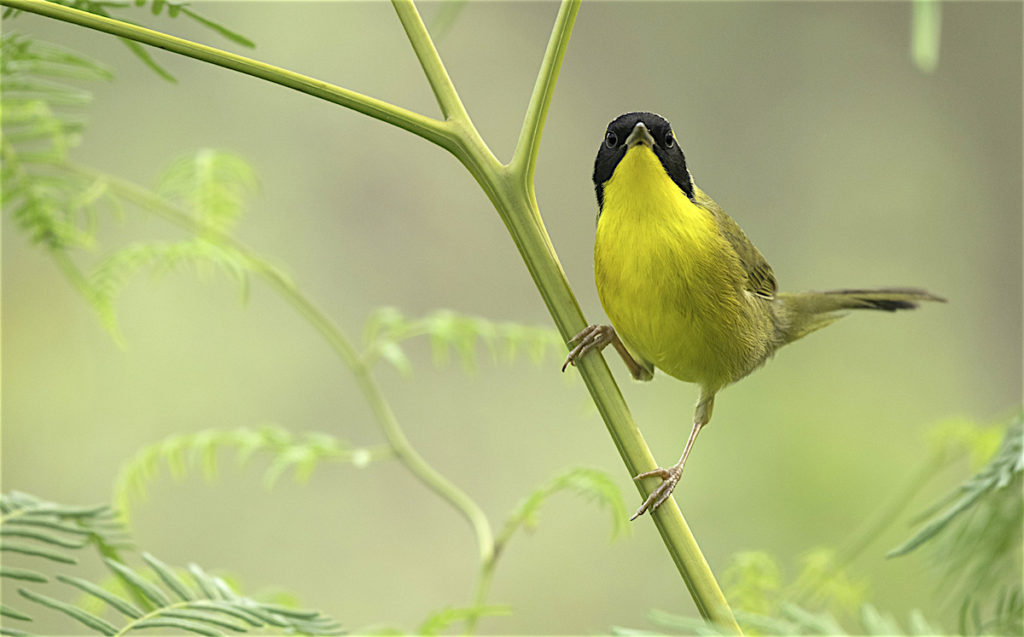
Bahama yellowthroat is 15 cm long with a large bill. The adult male of the nominate race G. r. rostrata, found on Andros and New Providence islands has an olive-green back and mainly yellow underparts, slightly paler on the belly. It has a black facemask and grey forecrown. The female is similar, but lacks the black mask and has a grey crown; she may have a whiter belly.
The adult male of G. r. tanneri, found on Grand Bahama, Great Abaco and associated islands, has a yellow tinge to the forecrown band, and G. r. coryi of Eleuthera and Cat islands has a mainly yellow forecrown.
The Bahama yellowthroat can be distinguished from wintering common yellowthroats by its greater size, heavier bill and slower, more deliberate movements. Males additionally have more extensively yellow underparts, a larger facemask extending onto the nape, and in the case of coryi the distinctive yellow forecrown. Females have a grey wash to the head not shown by common yellowthroat.
The song of Bahama yellowthroat is a loud wichety wichety witchery wich, similar to that of the common yellowthroat. The call is a softer jip than that of common yellowthroat.
Bahama Warbler
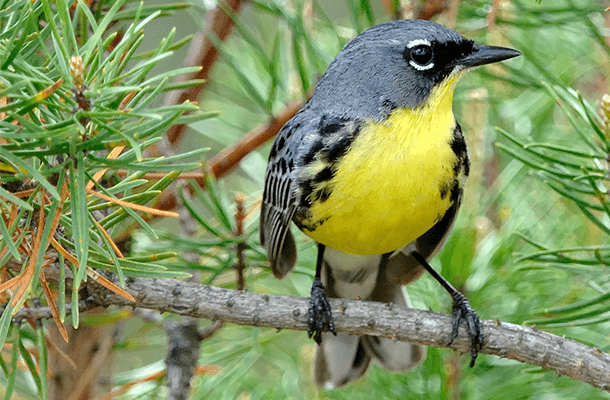
The Bahama warbler (Setophaga flavescens) is a species of bird in the family Parulidae. It is endemic to The Bahamas.
The taxon was formerly lumped with the yellow-throated warbler (Setophaga dominica), until the Bahama warbler was elevated to full species in 2011.
Its natural habitat is pine forest on Grand Bahama, Little Abaco and Great Abaco islands.